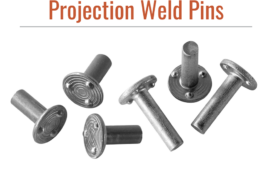By Dr. Jody Muelaner
 A pin joint is a connection between two objects that allows only relative rotation about a single axis. All translations as well as rotations about any other axis are prevented — the joint therefore has one degree of freedom (1-DOF). A pin joint is formally called a revolute joint in kinematics and may also be referred to as a pivot point when analyzing motion in two dimensions, or as a hinge.
A pin joint is a connection between two objects that allows only relative rotation about a single axis. All translations as well as rotations about any other axis are prevented — the joint therefore has one degree of freedom (1-DOF). A pin joint is formally called a revolute joint in kinematics and may also be referred to as a pivot point when analyzing motion in two dimensions, or as a hinge.
A pin joint is a type of kinematic pair, an idealized description of the motion constraints within a machine, which allows motion analysis. There are many ways that pin joints are constructed, for example hinges and roller bearings. Three surface contacts are typically involved in constraining motion to create a pin joint. A cylindrical surface contact constrains four degrees of freedom (translation in the two radial directions and rotations not about the allowed axis). Two planar surface contacts are typically required to constrain the single degree of freedom of axial translation, with each surface contact resisting surface penetration but not separation.
Kinematic pairs are classified as either a higher pair or a lower pair. Higher pairs involve point or line contact, for example a ball or a cylinder rolling over a surface. Lower pairs are normally considered as surface contact. Machines may have many higher pairs such as all the ball bearing contacts within roller bearings.
However, analyzing a complete machine at the level of all of these kinematic pairs would be extremely difficult. Therefore, these higher pairs are normally only considered when designing and analyzing the individual machine elements such as bearings and gears. When considering the machine as a whole, these elements are modelled as lower pairs, for example a roller bearing would be treated as a pin joint. The types of lower pair are:
- Prismatic joint (1-DOF): A joint that only allows linear motion along a single axis
- Revolute joint (1-DOF): A joint that only allows rotational motion about a single axis (a pin joint)
- Cylindrical joint (2-DOF): A combination of a prismatic and a revolute joint. This joint allows only linear motion along an axis and rotation about that axis.
- Spherical joint (3-DOF): A joint that ensures two bodies remain connected at a common point, preventing any linear translation, but rotation about any axis is allowed. A ball and socket joint is a physical realization of this.
- Planar joint (3-DOF): A joint that allows only translation over a plane and rotation about an axis normal to this plane. This type of joint is produced by a stable object resting on a flat surface.
- Screw pair (1-DOF): A joint that constrains motion to a helical path, such as a nut on a bolt. Although both translation and rotation occur, they are coupled so that there is only on degree of freedom — position along the helix. Both prismatic and revolute joints may be considered special cases of the screw pair. The prismatic joint has a helix angle of 90° and the revolute joint has a helix angle of zero.





Tell Us What You Think!